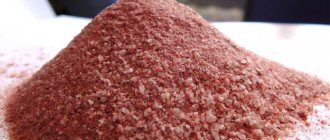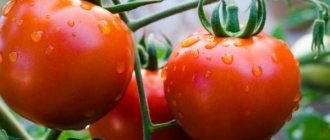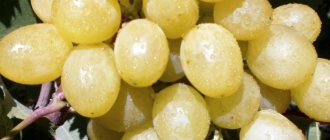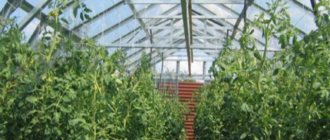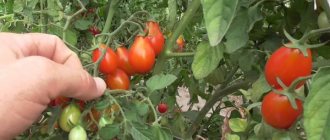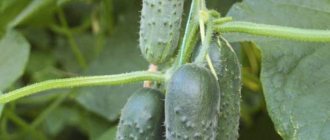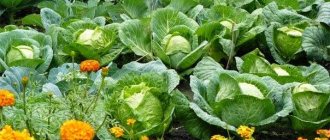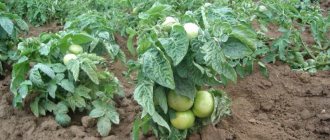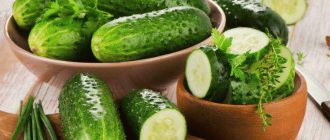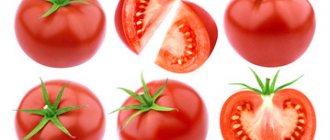Tomato seeds for greenhouses must be chosen carefully, since the yield depends on this.
What are the best varieties of tomatoes for greenhouse structures these days? How are they different from each other? How to choose the most suitable variety? All these questions are always of interest to gardeners who have eagerly built a comfortable greenhouse structure, stocked up on fertilizer and dream of getting a rich harvest of delicious tomatoes. For those summer residents who are completely unaware of what the most elite varieties of tomatoes are for greenhouses, the choice of seeds for a greenhouse will be discussed below.
Let's figure out which tomato seeds are best to plant in a greenhouse
So, if we analyze the preferences of modern gardeners, we will get the following popular ratings of the best varieties for the intended purpose and obtaining specific qualities.
Rating of varieties to get an early harvest.
- If you create a favorable microclimate in a greenhouse structure by increasing the level of fertilizing, lighting and heat, then the period from germination to fruiting can be reduced even to 3 weeks. And the “earliest” seeds today are Yarilo, Funtik, Blagovest, Druzhok, Scorpio, Gina, Semko Sinbad, Cavalier, Red and Pink Cheeks, etc.
- If the soil is chronically contaminated, then experts recommend planting varieties such as F1 Roma, Budenovka, Intuitsiya F1, Cio-Cio-San. The varieties Blagovest F1 and Kostroma F1 are also suitable.
- If the area is fairly waterlogged, the best types of tomatoes for greenhouse construction will be those that can be planted in moist soil. These include varieties Yablonka, stable F1 Talitsa, strong F1 Chelbas.
- Good varieties for small greenhouses, for growing organic tomatoes and their further canning, are available in abundance on the market. Juicy, tender varieties Pink Giant, Miracle of the Market, Sultan, Druzhok, Torbey, Khlynovsky, all with the F1 prefix and others are ideal.
- For cultivation in the northern territories (for sowing in a greenhouse), it is better to take the F1 varieties Verlioka, De Barao. If you have no experience, it is better to contact a specialist.
- If a summer resident grows tomatoes for sale and wants to store or transport them for as long as possible, it is ideal to sow Volgogradets, F1 Krasnobay, F1 Akatuy, F1 Ivanovets seeds for seedlings.
The varieties Ventrua, Yellow Drop, Legend, Slivovka, Cherry, and Picket are suitable for preservation. These varieties have received good reviews from gardeners and housewives.
Proper planting of tomato seeds in a greenhouse
Proper sowing of seeds is carried out in pre-prepared boxes, the height of which is about 7 cm. The soil for the greenhouse should consist of peat + humus + turf in an amount of 1 part of all components.
The soil should be moistened and poured into it:
- River sand – 1 liter.
- Wood ash – 1 spoon.
- Superphosphate – 1 spoon.
You can also use ready-made soil mixtures; such soil does not need to be fertilized additionally. You need to pour soil into the boxes, compact it a little, make grooves about 1.5 cm deep, pour cold sodium humate on it, and then sow the seeds. You need to pour soil on top of the seeds, and put everything in a non-dark place where the temperature is +22 ᵒC.
In order for tomato seedlings to germinate faster, after 5 days the boxes must be covered with PE caps.
When the plants grow 2 true leaves, it is necessary to dive. This is a procedure for replanting plants from boxes into larger containers, because strong roots need a lot of space. From the common box, using a match, you need to remove each plant along with a lump of soil and plant it in larger pots. The seedlings stay in the boxes for no more than 1.5 months; by this time their height will be approximately 30 cm.
To prevent seedlings from stretching out, it is necessary to monitor the correct temperature and lighting - you should turn the containers daily with a new side facing the window. And 1.5 weeks before planting in the greenhouse, the seedlings need to be hardened: put on the loggia, open the windows at night. To prevent the tomatoes in the greenhouse from getting sick and to produce a rich harvest, it is important to prepare the greenhouse structure well for the season. Since tomatoes are planted at the end of spring, when the nights are quite frosty, it is necessary to cover it with a double layer of PE film. It is necessary to leave a cushion of air through the layers of film, which will not only increase the temperature inside the greenhouse structure, but also increase the service life inside. It is important that good ventilation is thought out; 12 cm of last year’s soil must be removed and the remains disinfected with copper sulfate (1 spoon per bucket of water).
Also useful will be material on the proper preparation of soil in a greenhouse before planting:
It is important to remember that you cannot plant tomatoes in the same greenhouse structure for 2 years in a row, because infections usually remain in the ground and affect new plants. If a gardener wants to grow tomatoes in a greenhouse in winter, then care must be taken to provide additional light. Without it, tomatoes will not bloom and there will be no fruit. The beds are prepared one and a half weeks before planting tomato seedlings in a greenhouse structure. The soil must be loosened, weeds removed, and fertilizer applied. If the soil in the greenhouse is poor, then 250 grams of charcoal and 8 kg of humus per 1 m2 will be required, and if the soil is fertile, then 3 kg of the composition may be enough. Remember that for tomatoes in a greenhouse it is best to buy loamy or sandy loam, breathable soil.
The best low-growing varieties of tomatoes for greenhouses
Determinate tomatoes are in particular demand among owners of low shelters without heating. Here is a list of promising varieties, as well as their characteristics.
Early ripening
Most low-growing tomatoes are characterized by early fruit ripening. This feature allows the vegetable grower to harvest the first harvest at the beginning of June. This variety is especially suitable for cultivation in regions with short summers.
According to experienced gardeners, the following varieties are recognized as the best:
- “Cameo” - a neat, medium-branched bush that grows up to half a meter in height, red oval fruits weighing about 60 g ripen 90–95 days after sowing the seeds, and are distinguished by their fleshy, juicy pulp;
- “Doll F1” - develop stems up to 1 m and 85 days after planting give a bountiful harvest, the fruits are round with a small amount of seed inside;
- “White filling” - characterized by powerful tops and red round fruits weighing about 50 g, which ripen in 93 days;
- “Rocket” - gives a harvest 82 days after germination, the fruits are small in size, regular oval in shape;
- “Friend F1” - develops up to 70 cm, semicircular red, slightly ribbed tomatoes weighing about 90 g ripen 95–100 days after sowing, the harvest is juicy and has excellent taste.
Self-pollinating
The peculiarity of this category of tomatoes is the random release of pollen from the staminate anthers onto the flower pistil. To increase the amount of ovary formed, experts advise helping the plants by shaking the stems or using a fan.
Did you know? Tomatoes began to be eaten only after retired Colonel Robert Johnson, who had lost faith in the fairness of American justice, tried to poison himself by eating a bucket of ripe fruits.
This type of determinate varieties includes:
- “Riddle” - the harvest on half-meter bushes ripens in 82–88 days, approximately at the end of the first ten days of June, the fruits are tasty, fleshy, weigh about 50 g;
- “Pink honey” - develops stems about 70 cm high, bears fruit in 110–115 days, is characterized by poor disease resistance;
- “Ballerina” - a standard bush grows up to 60 cm, no more than 6 clusters are formed on a powerful trunk, fruiting begins after 105 days, red pepper-shaped tomatoes, high density, with thin skin and a pleasant taste;
- “Eleanor” - round, red fruits weighing 80–90 g ripen in 97–100 days, the bush grows no higher than 1 m;
- “Chaika” - the growing season of a half-meter bush lasts no more than 98 days, the fruits are round, slightly flattened, red, weighing about 80 g, the plant is resistant to diseases.
Large-fruited
Tomatoes of this variety are characterized by fleshy pulp and specific sugar content. They are beneficial for their versatility, but due to the large size of the fruits they are not suitable for pickling and pickling.
Also find out what to do to make tomatoes in the greenhouse turn red faster.
The best, according to consumer reviews, are:
- “Paradise” - characterized by pink, round-shaped fruits with medium density and delicate skin, weighing 125–200 g;
- “Hermitage” is a medium-yielding variety, the round red fruits of which weigh about 125 g;
- “Native” - distinguished by the potato-shaped shape of bright raspberry tomatoes, they weigh about 180 g, suitable for consumption in the form of fresh salads and canned food;
- “Igranda” is a high-yielding hybrid, which is advantageously distinguished by its unpretentiousness and resistance to most diseases of nightshade crops, has sweet-tasting, aromatic fruits of a flat-round shape with a maximum weight of 120 g;
- “Crimean rose” - produces up to 7 kg of yield per m²; the fruits are characterized by a pear-shaped shape, medium size, weight up to 120 g, rich pink-red color and a greenish spot at the stalk.
High-yielding
The amount of harvest depends on the microclimate of the greenhouse and the characteristics of plant care. But breeders took care of the genetic predisposition of some varieties to high fruiting.
Important! To obtain a harvest from mid-season semi-determinate tomatoes, you need timely pinching.
If the procedure is carried out according to the determinant type, the plant will begin to bear fruit early and quickly. Among these are popular:
- “Olya F1” - about 15 clusters are formed on a low bush, on which about 25 kg of fruits ripen with an average weight of 100–120 g, the harvest has a sweet and sour taste, dense peel and juicy pulp;
- “Raja” is an early-ripening, large-fruited variety, the fruits are characterized by a red color, round shape, sweetish taste, dense fleshy pulp, an average weight of 200–300 g, about 20 kg of harvest can be harvested from 1 m²;
- “Pink honey” - tomatoes are distinguished by their pink color, average weight of about 600-800 g, heart-shaped and sweet taste, the yield of the variety can reach more than 6 kg per bush;
- “Hazel Grouse” - characterized by early fruiting, ripe tomatoes have a red color with intermittent yellow stripes, they are characterized by a round, slightly flattened shape, the yield of the variety is within 15 kg;
- “Golden Domes” is distinguished by complex clusters on which about 13–15 large yellow-orange fruits weighing up to 800 g are formed, weakly heart-shaped, the variety’s yield is 20–25 kg.
Early
You can get a good early harvest from the following varieties:
- “Agatha” - on a half-meter bush, in 95–100 days, flat-round red vegetables with elastic, hard skin and juicy fleshy pulp weighing up to 110 g ripen;
- “Visibly-invisibly” is a high-yielding variety, characterized by abundant fruiting, dense, oval-shaped, red tomatoes, weighing up to 150 g, ripen in early June;
- “Lady fingers” - on a 60-centimeter bush, red cylindrical fruits with weak ribbing, dense peel and fleshy pulp, weighing about 100 g, ripen in 82–95 days;
- “Girl's blush” - favorably distinguished by long-term fruiting (up to 5 months), characterized by large rounded raspberry-colored fruits, weighing up to 200 g, with good marketing and taste qualities, fruiting occurs 100 days after germination;
- “Gina” is a medium-branched variety with a yield of about 10 kg, the growing season lasts 110 days, the fruits are oval, dense, juicy, red in color with an average weight of up to 280 g.
Late
Judging by the reviews of experienced gardeners, tomatoes have proven themselves well in this category:
- “Rio Grande” is a high-yielding, unpretentious variety, the growing season lasts 125 days, small red fruits have good taste;
- “Finish” - the crop ripens in 135 days, the tomatoes weigh about 90 g, are distinguished by their deep red color, sweet and sour taste, juicy pulp and very thick skin;
- “Arabian pink” - characterized by extended fruiting, the duration of the vegetative period is 130 days, ripe tomatoes weigh about 300 g, have a heart-shaped shape, a thick pink color, slightly granular pulp;
- “Rocket” - fruiting occurs after 130 days, the fruits are red, juicy, shaped like an elongated oval, weigh about 60 g;
- “Titan” - the growing season lasts 130 days, tomatoes have high taste and commercial qualities, are characterized by a weight of about 120 g, red color, high density and fleshiness, no more than 4.5 kg of harvest can be harvested from one bush.
Without stepsoning
Many novice gardeners find it difficult to identify stepchildren, removing foliage instead.
Important! If the air temperature in the greenhouse has not warmed up to +10ºС, then it is recommended to disinfect the walls and ceilings with an aqueous solution of laundry soap. And when the thermometer rises higher, mold and fungi from the internal surfaces of the frame should be removed with the drug
"
Fitosporin
"
. Similar procedures need to be done with work equipment, boxes, and shelving. Such actions inhibit the development of the bush, so in such situations it would be very appropriate to choose the following varieties of tomatoes:
- “Watercolor” - on a low compact bush, after 115–120 days, elongated fruits with elastic thick skin and juicy pulp ripen;
- “Red Fang” is a high-yielding, early-ripening variety with small red fruits, the growing season lasts about 120 days;
- “Duck” - characterized by abundant fruiting, medium-sized tomatoes, round in shape with weak ribbing, orange in color;
- “Krakowiak” is an early-ripening variety with small flat-round red salad-type tomatoes.
How to choose the best tomato seeds for greenhouses
Even before going to a specialized store, you can decide on the answer to the question of which seeds to choose. First, you need to think about how much space will be allocated for growing tomatoes.
Attention! On an area of 4 m2, only 40 bushes can be planted according to a special scheme - 2 ridges 1 m wide, 4 m long and a meter-long passage between them. It is also worth observing the optimal distance for planting tomatoes in a greenhouse, read about this: https://homeli.ru/dvor-i-sad/teplitsy/rasstoyanie-pomidorov-v-teplitse
On each bed, bushes are arranged in a checkerboard pattern of 10 pieces. The greenhouse should be located in a sunny place. The second point is to prefer varieties or hybrids? Varieties are traditionally considered tastier, but they are weaker than hybrids.
Hybrids:
- Resistant to the vagaries of weather;
- Grows well, disease resistant;
- They produce delicious, juicy tomatoes.
They cannot be propagated by seeds, since the seedlings grown from them will not repeat the characteristics of their parents. If a summer resident plans to grow tomatoes in protected ground, then it is better to choose varieties. If there is no greenhouse, then it is better to plant hybrids in open ground.
The best varieties and hybrids of greenhouse tomatoes for the new season 2021
tomatoharvestplitzagricultural technology
26.12.2020
Choosing the right variety is 80% of success. We will tell you about the best representatives of tomatoes for greenhouses, which we are sure you will appreciate, since they are all extremely productive.
LEMONADE JOE
The dazzling beauty of the LEMONADE JOE varietal tomato will outshine any other. Painted bright golden, rounded elongated “lemons” with a tiny “nose” are extremely charming!.. The plant is strong, tall - up to 2.5 meters, with complex clusters in which 25-30 fruits weighing up to 100 g are formed This “autumn park” is especially beautiful during the ripening period: “grape” and tomato bunches, which simultaneously reach biological maturity, literally “fill” the greenhouse with “gold” - there is no better place for a photo shoot. The variety is mid-season, super-yielding, with a long fruiting period, and is not afraid of late blight. The fruits are sugary, juicy, fragrant, do not crack for a long time, and are suitable for both fresh consumption and canning.
But to create a “limonary” you will need to follow certain agricultural techniques. You need to: maintain a distance between bushes of at least 60 cm; limit the plant’s growth and timely prune it so that it “remembers” the growth and ripening of fruits; keep the bush strictly in one stem and then the tomatoes will be of normal size.
The result will not keep you waiting, and you cannot avoid the delight and praise of your family! And let your neighbors be tormented by the question of how you managed to grow so many heat-loving lemons in a regular greenhouse in one season, and most importantly, why?
RASPBERRY DELIGHT
The gardener is a bad one who does not dream of growing large-fruited tomatoes with his own hands, fleshy, plump, sweet, ripening in clusters on the root... Do you think that only professionals can cultivate these? We hasten to dispel this myth: it’s not a matter of experience (although, undoubtedly, it plays a role), since you can learn anything if you want. Remember the saying? What goes around comes around. If you choose a good variety, the results will be just as good. And if we’re talking about large-fruited plants, then we’ll talk about the most delicious and popular variety among gardeners, RASPBERRY DELIGHT.
Tomato has not only the highest taste characteristics, but also a lot of other positive qualities. The variety is extremely productive: plants that grow up to 160-180 cm in height are literally covered with raspberry tomato balls, reminiscent of decorated Christmas trees, looking at which you involuntarily feel RASPBERRY DELIGHT! The first fruits ripen 115 days after germination (mid-season variety), and they are filled into the clusters simultaneously. The tomatoes are very large - on average 300 g, although often 700 g or more; they ripen perfectly on the vine and do not crack for a long time.
Fresh salads with these juicy, meaty, sweet tomatoes are a true pleasure! And what lecho!..And what sauces!..And what juice!..You will lick your fingers! The variety was bred by Chelyabinsk breeders, therefore it is problem-free and reliable, suitable for cultivation in all types of greenhouses.
You will definitely succeed!
IRISH LIQUOR F1
The divine taste of tomatoes IRISH LIQUOR F1 is so ingrained in your memory that you will forever remain in the power of this delicately pleasant sweetness, combined with a pleasant tomato aroma!.. Well, how do breeders manage to create such “vegetable” masterpieces that are ideal in both taste and taste? mind?!
The “appearance” of the new, original hybrid IRISH LIQUOR F1 is a separate issue. The color is unique: the fruits are pale green, which, when the tomato reaches ripeness, turns into yellow-green. Sharma adds a barely noticeable dark stripe on the barrels, making the large (up to 400 g, average weight 250-300 g), round-flat fruits even more artistic and aesthetic.
The hybrid is mid-early, the first harvest can be counted on 110-112 days after germination. It is recommended to grow it indoors. The tomato is in good “athletic shape”: strong, strong, 120-150 cm high, with a massive trunk and branches. The first inflorescence is formed above the 8-9 leaf; the clusters usually contain 3-5 weighty fruits. Tomatoes are multi-chambered, incredibly fleshy, juicy... Well, you already know everything about the amazing, delicious taste!
Are you reading and your mouth is watering? When you see these gorgeous tomatoes with your own eyes, and you reap a harvest (the hybrid surpasses the standard Malachite Box variety in terms of total yield by 9-11%, in the yield of ripe fruits - by 32%) - they will not flow like that yet! But enough words, it's time to enjoy!
RAPUNZEL GOLD BRAIDS
The variety is truly fabulous. What you will see when the tomato begins to bear fruit: you have definitely never seen such gorgeous “golden braids” similar to the hair that the heroine of the Brothers Grimm fairy tale Rapunzel had. And it's not magic! It's genetics! Breeders have created a unique product - an early-ripening and abundantly productive tomato variety.
The plant is tall, 160-180 cm, from the appearance of the first shoots to the first fruits it takes only 90-94 days. A distinctive feature is the simultaneous filling of fruits into the brush. And these brushes, believe me, are more amazing than amazing! The fruits weigh 15-18 g, almost orange in color, round, aromatic, juicy, tender, with a unique fruity aftertaste!.. And there are so many of them!.. I can’t even believe that there can be so many tomatoes. How could he! If, of course, you follow agricultural practices. Experts recommend growing the plant in a way that is convenient for you; it is effective both in open beds and in a greenhouse; It’s better to form 2 stems. The fruits are universal. A real dessert - fresh, ideal for canning - the jars with these mini-tomatoes are simply gorgeous!
MALINOVSKY
Fans of large-fruited plants are delighted with this variety. Still would! Such huge, weighty tomatoes are simply amazing! The weight of the fruit reaches 500 g (!). Aren't these heroes? Aren't these heavyweights?
The variety is surprisingly productive. Moreover, it shows good results in greenhouses, greenhouses, and open ground. There is only one “but”: without shelter, tomatoes may turn out to be smaller in size. But it might taste even better. Although, it seems, it’s much better? Sugar fruits are broken, fragrant, tender, juicy!.. After 100-115 days - already on the table. Either a salad from them or preparations for the winter. And what kind of ketchup does it make? Complete delight! And no additives harmful to the body: everything is natural, environmentally friendly.
Of course, only powerful plants can withstand such huge tomatoes and this must be kept in mind. MALINOVSKY is a tall variety whose bushes require shaping and staking.
Maturation in the hand is incredibly friendly. Another distinctive feature of the tomato: the skin of the fruit is elastic, so the tomatoes do not crack when ripe on the vine.
SIBERIAN GARLAND F1
Your own tomatoes in June! You think this is impossible! How possible! You just need to sow the extremely early ripening hybrid SIBERIAN GARLANDA F1 with the first rays of spring and 90-95 days after germination, purple-red tomatoes filled with tomato juice will make you smile. Well, there will be no limit to joy, because a tall plant (170-180 cm in height) will be completely covered with tassels with large, weighing 250-300 g, round, smooth fruits. During the period of mass ripening of tomatoes - a fascinating sight! It resembles a Christmas tree on which there is a New Year's garland with huge scarlet-red balls, so filled that it seems that they are about to burst and shower with bright, multi-colored confetti. Don’t worry, this won’t happen: tomatoes are very dense, practically not subject to cracking, and can withstand transportation well. The taste of tomatoes is excellent. Salads, slices – top class! And if you decide to make juice!.. You’ve definitely never tasted something so tasty!
For the best result, you need to “lead” a tomato with several stems (at least 2). It can be grown both in film greenhouses and in open beds as a trellis crop. If you follow the necessary agricultural techniques, the first brush will form above the 6th leaf, the subsequent ones – after 2-3. In total, the plant will form 10-11 clusters of 6-8 fruits each. The yield can be mind-blowing - 17-19 kg/m²! I want such a sea of tomatoes, don’t I?
Features of planting seedlings from tomato seeds for greenhouses
When planting tomato seedlings in a greenhouse, you need to remember a few simple but important rules. The soil for planting plants must be warm. Do not plant in cold soil, because in this case the seedlings will rot. Suitable ground temperature is 15°C. To achieve this, you must first cover the soil with black PE film. You cannot plant tomatoes very low, because then the stem, covered with soil, will produce fresh roots, and the growth of the plant will stop.
You can learn more about how to properly plant tomatoes in a greenhouse from the material:
Do not oversaturate tomatoes with nitrogen. Many people fill the planting holes with fresh manure solution, poultry droppings or urea. Such procedures can cause the growth of green mass rather than fruits. It is necessary to inspect the seedlings daily, remove diseased and yellow leaves, and when planting, remove cotyledon leaves that are located at ground level or below.
How to choose tomato seeds for greenhouses (video)
Planting tomatoes in a greenhouse is done in the evening or on a cloudy day in pre-moistened soil. For disinfection, you can pre-dild the wells with a thick, not cold solution of manganese. By choosing the right type of seeds, you can count on a good harvest.
- Author: admin
Rate this article:
- 5
- 4
- 3
- 2
- 1
(2 votes, average: 5 out of 5)
Share with your friends!
How to properly form low-growing tomatoes in a greenhouse
Determinate varieties are best formed into 2 stems. In this case, it is recommended to remove the lower foliage to ventilate the root zone. In addition, this will make it easier to water and fertilize vegetables.
Varieties that are prone to the growth of stepsons require their timely removal. Please note that extra shoots never appear on the stems; they must be looked for in the leaf axils.
Did you know? A record-breaking tomato was grown in Wisconsin (USA). The fruit was the size of an average watermelon and weighed almost 3 kilograms.
When growing low-growing tomatoes in a greenhouse, a larger number of flower clusters can be left. The microclimate of polycarbonate and other shelters will allow the formed ovary to ripen in time.
It is advisable to lighten bushes that do not require pinching well and constantly monitor the level of moisture in the soil and room, otherwise late blight cannot be avoided.
The need for installation of supports and garter may arise only in specimens that develop to a height of 1 m and have thin, fragile stems. In this case, in order not to damage the tops, it is advisable to use a soft fabric tourniquet as a garter.
